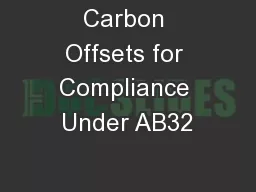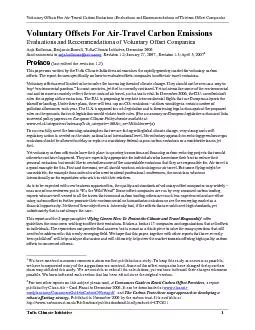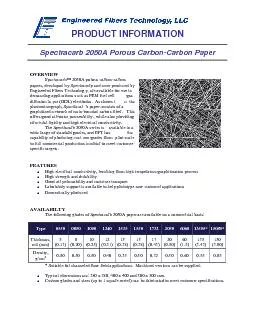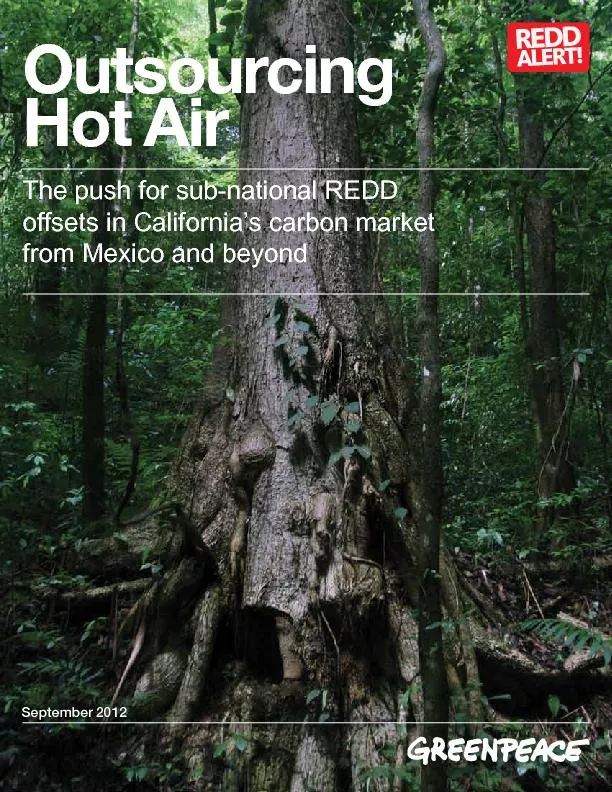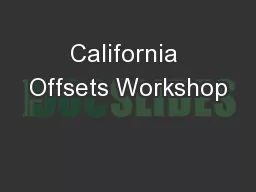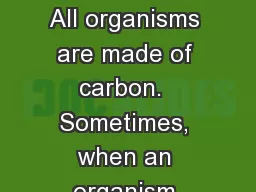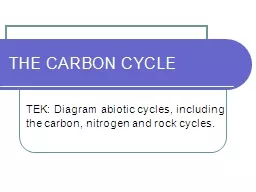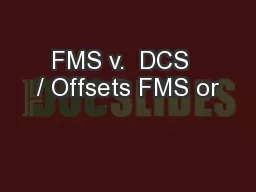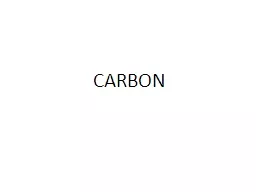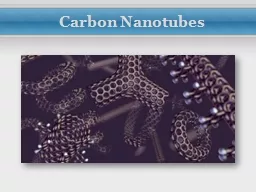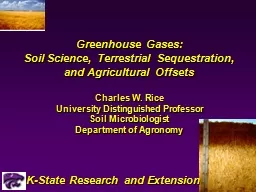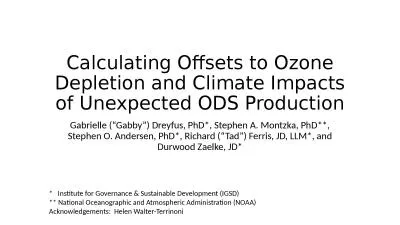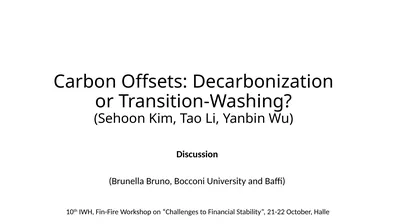PPT-Carbon Offsets for Compliance Under AB32
Author : tatiana-dople | Published Date : 2018-03-06
Joel Levin Vice President of Business Development Objectives of the Reserve Encourage actions to reduce greenhouse gas emissions Show that carbon offsets can be
Presentation Embed Code
Download Presentation
Download Presentation The PPT/PDF document "Carbon Offsets for Compliance Under AB32" is the property of its rightful owner. Permission is granted to download and print the materials on this website for personal, non-commercial use only, and to display it on your personal computer provided you do not modify the materials and that you retain all copyright notices contained in the materials. By downloading content from our website, you accept the terms of this agreement.
Carbon Offsets for Compliance Under AB32: Transcript
Joel Levin Vice President of Business Development Objectives of the Reserve Encourage actions to reduce greenhouse gas emissions Show that carbon offsets can be a useful tool in addressing climate change. Carbon tax es provide certainty in regard to the marginal cost f aced by emitters per tCO2e but do not guarantee a maximum level of emission reductions unlike an emissions trading scheme However this economic instrument can be used to achieve a cos Anja Kollmuss, Benjamin Bowell, Tufts Climate Initiative, December 2006 Send comments to anja.kollmuss@sei-us.org Revision 1.2; January 27, 2007 , Revision 1.3; April 5, 2007 (last edited for revisi OVERVIEW Spectracarb™ 2050A porous carbon-carbon papers, developed by Spectracorp and now produced by Engineered Fibers Technology, are available for use in demanding applications such as PEM fue September 2012 Introduction: Good intention & misdirection The fatal flaws of sub-national REDD+ offsets The way forward Greenpeace International 1066 AZ AmsterdamFor more information contact: A tree Current State of the California . Carbon Market. . June 21, 2011. . Josh Margolis. . jmargolis@cantorco2e.com. 415-296-9359. 1. Who are these guys?. . CantorCO2e. . Litigation . Sound and Fury signifying?. m. old. cast. Petrification. Mineralization. Petrified fossils are created when water containing minerals seeps into the open spaces found within an organism. After millions of years, these minerals crystallize and form an almost glass-like copy of the organism.. What Is Carbon?. An element: 6 protons, 6 neutrons. The basis of life of earth . Found in all earth systems. Carbon Cycle. The same carbon atoms are used repeatedly on earth. They cycle between the atmosphere, hydrosphere, geosphere and biosphere.. DCS. Foreign Military Sales (FMS). Letter of Offer and Acceptance. Foreign Country US. Direct Commercial Sale (. DCS. ). Contract. Foreign Country. Textron. FMS or DCS. Foreign Country Preference. Organic chemistry. is the study of compounds that contain carbon. Organic compounds range from simple molecules to colossal ones. Most organic compounds contain hydrogen atoms in addition to carbon atoms. Discovered in 1991 by . Sumiyo. . Iijima. , a Japanese scientist working at the NEC Corporation. . Is a tubular form of carbon with a diameter as small as 0.4 nm and length from a few nanometers up to a millimeter. . . SYFTET. Göteborgs universitet ska skapa en modern, lättanvänd och . effektiv webbmiljö med fokus på användarnas förväntningar.. 1. ETT UNIVERSITET – EN GEMENSAM WEBB. Innehåll som är intressant för de prioriterade målgrupperna samlas på ett ställe till exempel:. Charles W. Rice. University Distinguished Professor. Soil Microbiologist. Department of Agronomy. K-State Research and Extension. . IPCC Fourth Assessment Report, Working Group III, 2007. . Mitigation. Gabrielle (“Gabby”) Dreyfus, PhD*, Stephen A. Montzka, PhD**, Stephen O. Andersen, PhD*, Richard (“Tad”) Ferris, JD, LLM*, and Durwood Zaelke, JD*. * Institute for Governance & Sustainable Development (IGSD). Carbon Offsets: Decarbonization or Transition-Washing? (Sehoon Kim, Tao Li, Yanbin Wu) Discussion (Brunella Bruno, Bocconi University and Baffi) 10th IWH, Fin-Fire Workshop on “Challenges to Financial Stability”, 21-22 October, Halle
Download Rules Of Document
"Carbon Offsets for Compliance Under AB32"The content belongs to its owner. You may download and print it for personal use, without modification, and keep all copyright notices. By downloading, you agree to these terms.
Related Documents

